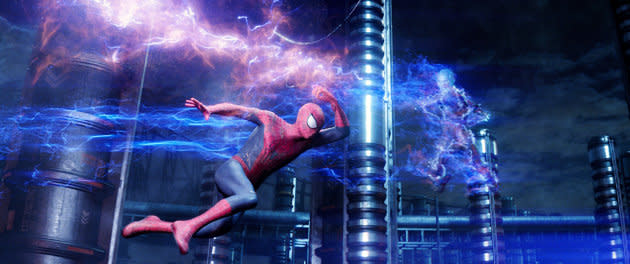 Wide Screen
Wide ScreenHow the Super Bowl changed movie advertising

As most people know by now, Super Bowl XLVIII kicks off this weekend. For some, that means simply watching and enjoying the biggest football game of the year. To others, it means taking in everything else the game has to offer, including big budget commercials and movie trailers.
This year, viewers can expect to see TV spots for nine big upcoming films, including “RoboCop,” “The Amazing Spider-Man 2,” “Need for Speed,” “Captain America: The Winter Soldier,” and “Transformers: Age of Extinction,” among others. With an annual viewership of close to 100 million people across North America, the Super Bowl is a "must attend" TV event for the year's biggest movies.
Just how much are Hollywood studios spending to have their movie trailers play during the Super Bowl this year? Ad Age reports that just 30 seconds worth of advertising during the big game could cost as much as $4 million.
Of Course, the Super Bowl wasn't always the mecca for movie advertising that it is today.
During the 1980s, the Super Bowl remained almost strictly the domain of commercials for cars, beer, cola, and credit cards. These ads weren't produced in a vacuum, though, as many Super Bowl commercials of the era riffed on blockbuster movies of the time, like this 1986 “Raiders of the Lost Ark”-inspired Sprint commercial:
However, most agree that it was Apple’s stunning 1984 commercial for the original Macintosh that really changed the game. The ad is considered a major turning point for not just Super Bowl advertising but for advertising in general. Directed by Ridley Scott (“Blade Runner,” “Prometheus”), the George Orwell-inspired commercial cost $900,000 to produce and had production values that rivaled any movie at the time. The now-iconic TV spot opened up the world’s eyes to the true power of a well-produced and well-placed commercial.
Hollywood definitely took notice as well, but it wasn’t until the 1990s that movie trailers really started showing up regularly during the big event. Super Bowl XXVII in 1993 saw more movies advertised during the NFL championship than ever before. Classics from the '90s like “Cliffhanger,” “A Few Good Men,” and “Falling Down” all got big spots on Super Bowl Sunday
But in 1995, Hollywood finally took advantage of the Super Bowl’s status as a TV event. Twentieth Century Fox turned their “Independence Day” Super Bowl teaser into an event unto itself, complete with a shot of the exploding White House and the vaguely threatening tagline: “Enjoy the Super Bowl. It could be your last.” When millions of people are watching, this is exactly how you want to be marketing your big budget blockbuster.
"Independence Day" was a huge hit due, in large part to the film's great marketing. The Super Bowl teaser didn't make or break the alien invasion flick, but it definitely got people talking.
After that, there was no looking back for Hollywood. Super Bowl movie teasers had to get bigger and better every year.
Subsequent famous examples include New Line Cinema's hilarious "Star Wars" bait-and-switch for the first "Austin Powers" movie in 1999 (released the same year that "Star Wars Episode I: The Phantom Menace" hit theatres), Marvel's heavy metal tease for the first "Iron Man" in 2008, and J. J. Abrams' "tells you absolutely nothing" teaser for 2011's "Super 8." Hollywood is now using these Super Bowl trailers to tease so-called "extended trailers" that viewers can watch online during the game.
Super Bowl TV spots are famously expensive. It can cost millions and millions of dollars for just a few seconds of prime air time -- a price that major movie studios now see as the cost of doing blockbuster business.
Super Bowl XLVIII (and all those movie trailers) air on February 2, 2014.

 Yahoo Movies
Yahoo Movies 